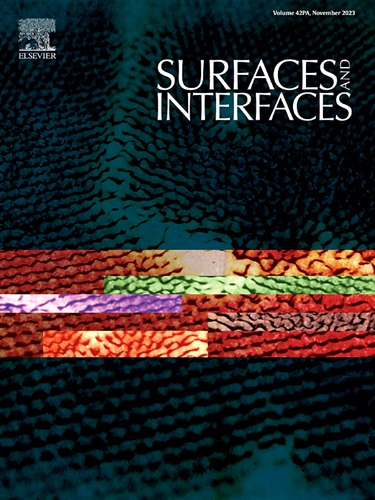Utilizing graph theoretical analysis to quantify the micro- and nano-structures formed on femtosecond laser processed copper
IF 6.3
2区 材料科学
Q2 CHEMISTRY, PHYSICAL
引用次数: 0
Abstract
Femtosecond laser surface processing (FLSP) is a cutting-edge technique that enhances surface functionalities by creating intricate self-organized micro- and nano-scale structures. However, a significant challenge lies in accurately and quantitatively assessing these complex structures across different materials and processing parameters. To address this challenge, a graph theoretical (GT) approach was used to provide a systematic framework for the precise quantification and differentiation of FLSP-generated surface structures based on essential topological parameters and laser processing parameters. These parameters encompass characteristics such as the number of nodes, edges, graph density, graph diameter, and clustering coefficient. In addition to the GT parameters, we also utilized peak-to-peak distances, area of the mounds and mound density to elucidate the variations observed. In this study, we irradiated series of copper substrates with varying number of pulses at a fixed peak fluence. The outcome of this study showed two things: firstly, the ability to differentiate between FLSP Cu surface structures and secondly, that a mere survey of the surface features via GT parameters could predict the characteristics of the subsurface microstructure. The insights into both surface and subsurface changes to the material gained from the GT analysis provides understanding of the complex formation mechanisms.

利用图论分析对飞秒激光加工铜表面形成的微纳米结构进行了定量分析
飞秒激光表面处理(FLSP)是一种通过创建复杂的自组织微纳米级结构来增强表面功能的前沿技术。然而,一个重大的挑战在于准确和定量地评估这些复杂的结构跨越不同的材料和加工参数。为了解决这一挑战,采用图论(GT)方法,基于基本拓扑参数和激光加工参数,为精确量化和区分flsp生成的表面结构提供了一个系统框架。这些参数包括节点数、边数、图密度、图直径和聚类系数等特征。除了GT参数外,我们还利用峰间距离、土丘面积和土丘密度来解释所观察到的变化。在这项研究中,我们用不同数量的脉冲在一个固定的峰值辐照一系列铜衬底。这项研究的结果表明了两点:第一,区分FLSP Cu表面结构的能力;第二,仅仅通过GT参数对表面特征进行调查就可以预测地下微观结构的特征。从GT分析中获得的对地表和地下物质变化的洞察,有助于理解复杂的形成机制。
本文章由计算机程序翻译,如有差异,请以英文原文为准。
求助全文
约1分钟内获得全文
求助全文
来源期刊

Surfaces and Interfaces
Chemistry-General Chemistry
CiteScore
8.50
自引率
6.50%
发文量
753
审稿时长
35 days
期刊介绍:
The aim of the journal is to provide a respectful outlet for ''sound science'' papers in all research areas on surfaces and interfaces. We define sound science papers as papers that describe new and well-executed research, but that do not necessarily provide brand new insights or are merely a description of research results.
Surfaces and Interfaces publishes research papers in all fields of surface science which may not always find the right home on first submission to our Elsevier sister journals (Applied Surface, Surface and Coatings Technology, Thin Solid Films)
 求助内容:
求助内容: 应助结果提醒方式:
应助结果提醒方式:


